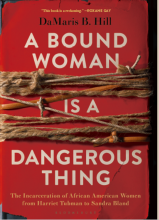\ Vi-zə-bəl \ \ Teks-chərs \ (Visible Textures)



The Fluid Boundaries of Suffrage and Jim Crow: Staking Claims in the American Heartland engages in an important conversation about race relations in the twentieth century and significantly extends the historical narrative of the Civil Rights Movement. The essays in this collection examine instances of racial and gender oppression in the American heartland—which is conceived of here as having a specific cultural significance which resists diversity—in the twentieth century, instances which have often been ignored or overshadowed in typical historical narratives. The contributors explore the intersections of suffrage, race relations, and cultural histories, and add to an ongoing dialogue about representations of race and gender within the context of regional and national narratives.

A Publishers Weekly Top 10 History Title
A revelatory work in the tradition of Claudia Rankine's Citizen, DaMaris Hill's searing and powerful narrative-in-verse bears witness to American women of color burdened by incarceration.
"It is costly to stay free and appear / sane."
From Harriet Tubman to Assata Shakur, Ida B. Wells to Sandra Bland and Black Lives Matter, black women freedom fighters have braved violence, scorn, despair, and isolation in order to lodge their protests. In A Bound Woman Is a Dangerous Thing, DaMaris Hill honors their experiences with at times harrowing, at times hopeful responses to her heroes, illustrated with black-and-white photographs throughout.
For black American women, the experience of being bound has taken many forms: from the bondage of slavery to the Reconstruction-era criminalization of women; from the brutal constraints of Jim Crow to our own era's prison industrial complex, where between 1980 and 2014, the number of incarcerated women increased by 700%.* For those women who lived and died resisting the dehumanization of confinement--physical, social, intellectual--the threat of being bound was real, constant, and lethal.